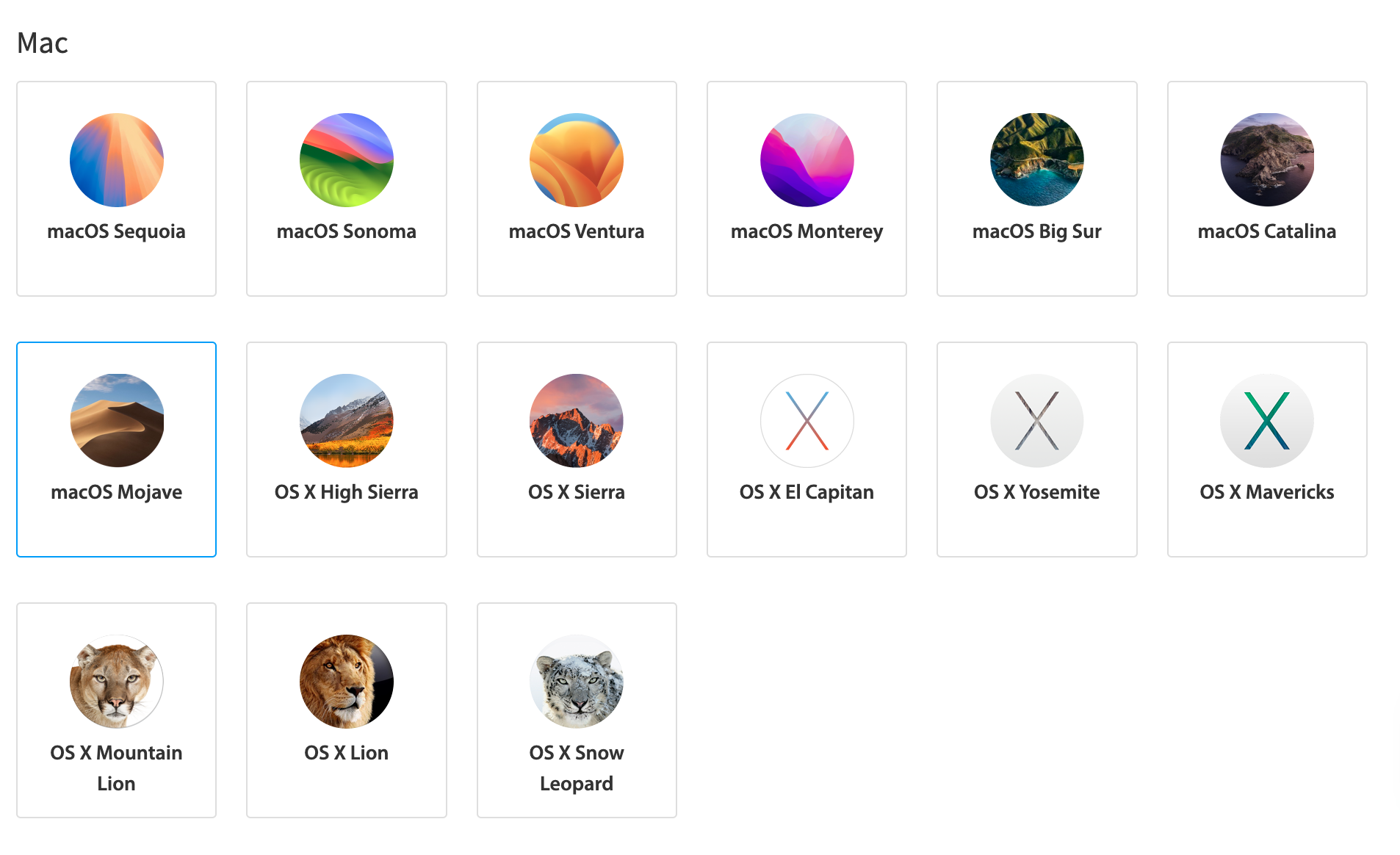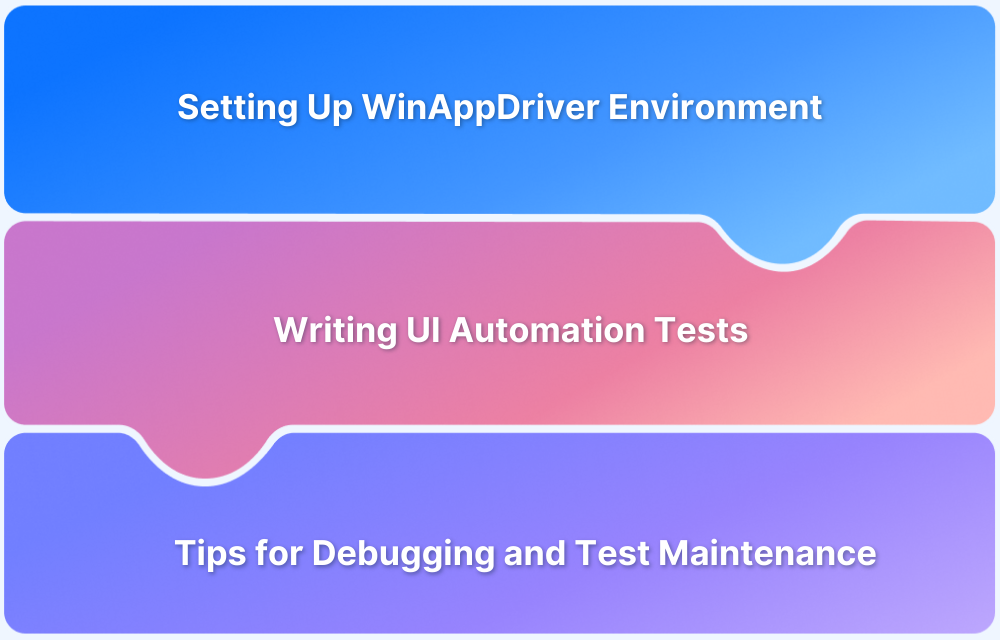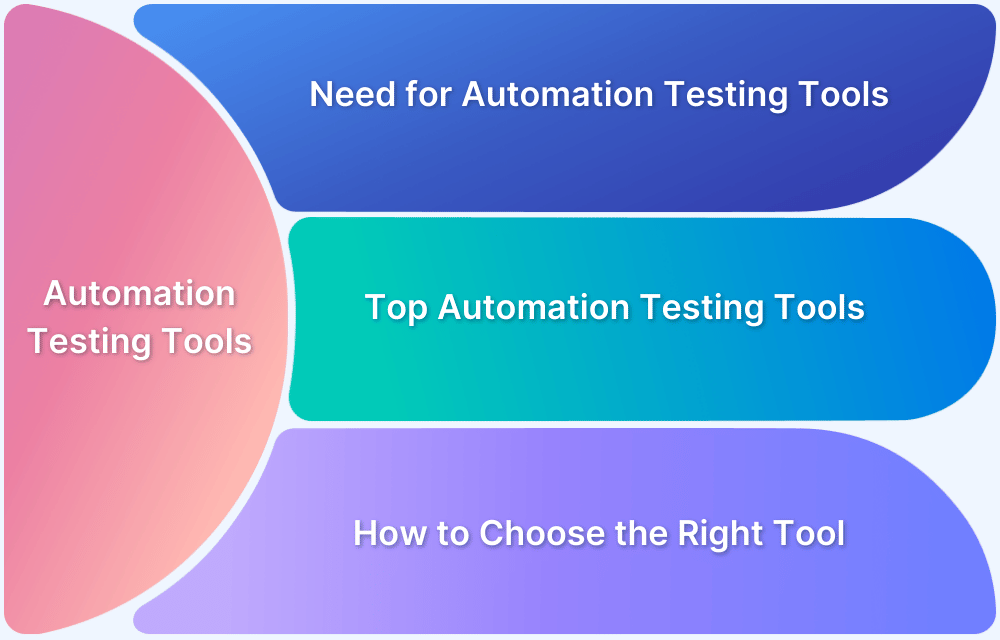Desktop applications are still everywhere. Accounting software, design tools, IDEs, media editors, and plenty of enterprise applications that teams use daily. Even with the rise of web apps, desktop software hasn’t gone anywhere.
However, testing desktop apps comes with its own challenges. They run on different operating systems, behave differently across Windows versions, and don’t have the browser-based testing tools that web apps do. Add in native UI elements, file system interactions, and OS-level permissions, and testing gets complicated fast.
This guide covers what desktop automation tools are, why they matter, what features to look for, and the best tools available today.
What are Desktop Automation Tools?
Desktop automation tools are specialized software designed to automate repetitive tasks on desktop environments. These tools facilitate the automation of tasks within desktop applications, enabling users to create, execute, and manage test cases for verifying the functionality and performance of desktop-based applications.
Desktop automation tools typically include features like record-and-playback, scripting support, and object recognition capabilities, making them invaluable in development and testing scenarios.
Why Automate Desktop Applications?
Automating desktop applications ensures increased accuracy and productivity. Unlike manual testing, automation allows businesses to consistently repeat tasks, reducing errors and enhancing process speed.
In addition, automation helps ensure that different functionalities of the desktop applications are rigorously tested under various scenarios, resulting in more robust software. With desktop automation tools, testers can run multiple test cases simultaneously across different environments. This makes it easier to identify bugs and performance issues early in the development cycle.
Benefits of Desktop Testing Tools
Using desktop automation tools offers several advantages, including:
- Efficiency: Automated tests are faster than manual testing and allow continuous validation throughout the development process.
- Accuracy: Automation reduces human errors, ensuring that tests are executed precisely and repeatably.
- Cost-Effectiveness: By identifying bugs earlier in the software development lifecycle, automation reduces the costs of fixing defects.
- Scalability: Automated tests can be run across multiple environments, providing extensive coverage with minimal effort.
- Increased Productivity: Testers can focus on more complex tasks while desktop automation tools handle repetitive or mundane tasks.
Integrating these benefits effectively requires the right approach to tool selection and workflow design. BrowserStack’s QA specialists can help teams plan, implement, and optimize their desktop testing strategy to achieve consistent and scalable results.
Get Expert QA Guidance Today
Schedule a call with BrowserStack QA specialists to discuss your testing challenges, automation strategies, and tool integrations. Gain actionable insights tailored to your projects and ensure faster, more reliable software delivery.
What Features to Look for in a Desktop Automation Tool?
When selecting a desktop automation tool, there are several key features to consider:
- Object Recognition: The tool should have robust object recognition capabilities to identify UI elements easily.
- Record and Playback: A good automation tool should allow users to record actions and play them back to create test scripts without manual intervention.
- Cross-Platform Support: If your application needs to run on multiple platforms (Windows, macOS, Linux), the automation tool should support these environments.
- Scripting Flexibility: Advanced users may require scripting options, allowing them to customize their automation workflows.
- Integration with CI/CD Pipelines: Tools that integrate with continuous integration and delivery (CI/CD) environments streamline testing as part of the overall development process.
By understanding these essential features, teams can select the most appropriate desktop automation tools for their needs, ensuring efficient and effective test automation for desktop applications.
Best desktop automation tools
1. WinAppDriver
WinAppDriver (Windows Application Driver) is an open-source automation tool designed by Microsoft, primarily used for testing Universal Windows Platform (UWP) and classic Windows desktop applications.
It is built on the WebDriver protocol, making it compatible with various WebDriver-based frameworks, such as Selenium and Appium.
Key Features:
- Open-source and Free: No licensing costs, making it accessible to a wide range of users.
- WebDriver Protocol Support: Leverages the WebDriver architecture for seamless integration with other frameworks.
- Cross-language Support: This can be used with languages like C#, Java, Python, and more.
- Windows 10 Compatibility: Specifically designed for Windows 10 UWP and classic desktop applications.
- Integration with Selenium and Appium: Allows for test automation across web, mobile, and desktop platforms in one framework.
Pros:
- Ideal for developers familiar with WebDriver/Selenium.
- Supports both UWP and Win32 applications.
Cons:
- Limited to Windows environments.
- Lacks advanced features such as visual testing.
WinAppDriver is a great starting point for teams using Windows environments with prior experience in Selenium and WebDriver. It’s cost-effective but lacks some advanced capabilities.
2. BrowserStack
BrowserStack Automate is primarily known for its cross-browser testing capabilities, but it also provides strong support for desktop automation, enabling teams to automate tests on real desktop environments across different platforms.
Here’s a deeper dive into the desktop automation features of BrowserStack and why it’s becoming a popular choice for testers:
Key Features
- Cloud-based Real Desktop Testing: BrowserStack Automate enables automated testing on real desktop environments, eliminating the need for physical devices or labs. It also makes it easy to test across OS versions and screen resolutions.
- Comprehensive OS Coverage: Supports multiple Windows and macOS versions, ensuring consistent performance across platforms.
- Local Testing of Internal Apps: Test desktop apps on private networks securely with BrowserStack Local, avoiding internet exposure.
- Parallel Test Execution: Run multiple tests simultaneously across environments, speeding up execution and fitting CI/CD workflows.
- Integration with Automation Frameworks: Seamlessly integrates with Selenium, Appium, and other tools, supporting languages like Python and Java.
- Comprehensive Test Reports: Provides detailed reports with screenshots, videos, and logs to easily debug test failures.
Why Choose BrowserStack for Desktop Automation?
BrowserStack Automate offers a comprehensive and highly scalable platform for desktop automation, making it an excellent choice for large organizations that need to test across multiple desktop environments without the burden of maintaining physical infrastructure.
Its powerful parallel testing, CI/CD integrations, and robust support for real desktop environments allow teams to automate complex workflows efficiently.
BrowserStack Automate is a reliable and efficient option for enterprises looking for an all-in-one desktop automation solution that can scale with their testing needs.
3. Eggplant Functional
Eggplant Functional is a highly visual automation tool known for its image-based testing approach. It automates testing by simulating the user’s perspective and interacts with the user interface based on what’s visible on the screen.
Key Features:
- Image-based Testing: Uses image recognition to interact with applications, making it versatile for any platform.
- Cross-platform Compatibility: Supports Windows, macOS, and Linux.
- AI-driven Automation: Leverages AI for smarter automation and test optimization.
- Scripting Flexibility: Supports various scripting languages, including its own SenseTalk scripting language.
- Rich Integration Support: Easily integrates with CI/CD tools, including Jenkins, Bamboo, and Jira.
Pros:
- Ideal for testing non-standard UIs.
- Doesn’t rely on source code, allowing it to test virtually any software.
Cons:
- Expensive licensing model.
- Image-based testing may require higher maintenance when UI changes frequently.
Eggplant Functional is a powerful tool for teams needing to test complex, non-standard UIs, though its image-based approach can sometimes lead to higher maintenance costs. It’s great for large enterprises with intricate testing requirements.
Read More: How to test responsiveness of images
4. Winium
Winium is an open-source automation framework for Windows desktop applications, built on Selenium’s WebDriver protocol. It is specifically used for automating testing on legacy desktop applications (WinForms, WPF).
Key Features:
- Selenium-based Framework: Uses WebDriver, making it familiar to users of Selenium.
- Supports Legacy Apps: Focuses on automating older technologies such as WinForms and WPF.
- Cross-language Compatibility: Can be used with various languages, including Java, C#, and Python.
- Integration with CI/CD: Can easily integrate with Jenkins, Maven, and other CI/CD tools.
- Open-source: No licensing fees, offering cost savings for budget-conscious teams.
Pros:
- Cost-effective, as it’s open-source.
- Leverages the well-known WebDriver framework for ease of use.
Cons:
- Limited community support and documentation.
- Not as powerful as newer tools like TestComplete or Eggplant.
Winium is a good option for teams needing an open-source solution for automating legacy Windows desktop applications. However, it lacks some of the advanced capabilities found in modern tools.
5. Ranorex
Ranorex is a popular desktop automation tool known for its ability to automate testing across a wide range of desktop applications. It supports everything from simple record-and-playback tests to complex, coded test scenarios, making it a flexible option for both beginners and advanced users.
Key Features:
- Cross-platform Testing: Supports desktop, web, and mobile applications across multiple platforms.
- Record-and-Playback: Simplifies test creation for users with minimal coding experience.
- Powerful Object Recognition: Uses robust object recognition technology for identifying UI elements.
- Comprehensive Reporting: Provides detailed reports and screenshots of test execution.
- CI/CD Integration: Seamlessly integrates with Jenkins, TeamCity, and other CI/CD platforms.
Pros:
- Great for both novice and advanced testers, with an easy-to-use interface.
- Supports a wide range of technologies and platforms.
Cons:
- Can be expensive for small teams.
- Some users report a steep learning curve for complex features.
Ranorex offers comprehensive desktop automation with flexibility for both beginner and advanced testers. Its broad feature set makes it a solid choice, though its cost may be prohibitive for smaller teams.
6. Micro Focus UFT (Unified Functional Testing)
Micro Focus UFT is a commercial test automation tool known for its ability to automate desktop, web, and mobile applications. UFT uses both a keyword-driven approach and scripting (via VBScript), providing flexibility for testers with varying skill levels.
Key Features:
- Cross-platform Testing: Supports desktop, web, mobile, and API testing, making it a comprehensive testing tool.
- AI-powered Testing: Utilizes AI to enhance test maintenance and improve the accuracy of object recognition.
- Record and Playback: Simplifies automation by allowing users to record interactions with the application.
- Integration with CI/CD Tools: Seamlessly integrates with Jenkins, Azure DevOps, and other CI/CD platforms.
- Data-driven Testing: Facilitates testing with multiple sets of data for broader test coverage.
Read More: Data driven testing using Cypress
Pros:
- Extensive integration options for enterprise environments.
- AI-driven object recognition reduces the effort needed for test maintenance.
Cons:
- High licensing costs, making it less accessible for smaller teams.
- Complex setup process and requires significant infrastructure.
Micro Focus UFT is best suited for large enterprises with diverse testing needs and the budget to accommodate its licensing and infrastructure costs.
7. Robot Framework
Robot Framework is an open-source automation tool that uses a keyword-driven testing approach. Its modular architecture allows testers to extend the framework by creating reusable keywords, making it highly adaptable across different applications.
Key Features:
- Keyword-Driven Approach: Simplifies test creation by using predefined keywords, making it accessible to non-programmers.
- Library Support: Supports a wide range of external libraries for various automation needs, including desktop, mobile, and web testing.
- Cross-Platform Compatibility: Works across Windows, macOS, and Linux environments.
- Data-Driven Testing: Supports testing with large datasets to ensure comprehensive coverage.
- Extensibility: Allows users to create custom libraries and extend functionalities as needed.
Pros:
- Open-source and community-driven, making it cost-effective and flexible.
- Large ecosystem of libraries and plugins for extended capabilities.
Cons:
- Requires steep learning for those unfamiliar with keyword-driven testing.
- Lacks support for complex desktop applications.
Robot Framework is ideal for teams seeking a highly customizable and open-source solution, especially in cross-platform testing environments.
8. Appium Desktop
Appium Desktop is an open-source automation framework for testing mobile, web, and desktop applications. It’s an extension of the Appium framework designed specifically for desktop automation, with support for Windows and macOS applications.
Key Features:
- Cross-Platform Support: Supports Windows and macOS desktop applications, making it versatile.
- WebDriver Protocol: Uses the WebDriver protocol, allowing for seamless integration with other automation tools.
- Open-Source: Free to use, with active community support.
- Multi-Language Support: Can be used with programming languages such as Java, Python, C#, and more.
- Parallel Testing: Supports parallel execution of test cases to speed up test cycles.
Pros:
- Open-source with wide language support.
- Excellent for teams already familiar with Appium for mobile automation.
Cons:
- Limited desktop application support compared to dedicated desktop testing tools.
- Can be complex to configure for beginners.
Appium Desktop is a good choice for teams already leveraging Appium for mobile testing, but it might lack some depth in advanced desktop automation.
9. Karate
Karate is an open-source tool primarily used for API testing but also supports desktop automation through its integration with various desktop application libraries. It is widely appreciated for its ability to combine API, web, and desktop testing into a single framework.
Key Features:
- Unified API and UI Testing: Supports desktop, web, and API testing in a unified manner.
- Cucumber-based DSL: Uses a Cucumber-like syntax for writing tests, making it easier for non-programmers to contribute.
- Parallel Execution: Allows multiple test cases to run simultaneously, reducing test execution time.
- Easy Setup: Simple to set up and does not require extensive configuration.
- Cross-platform Testing: Works on Windows, macOS, and Linux platforms.
Pros:
- Combines API, UI, and desktop testing in one tool.
- Open-source with an easy-to-learn syntax.
Cons:
- Primarily API-focused, so its desktop testing capabilities are more limited compared to other tools.
- Limited community and support for desktop-specific use cases.
Karate is ideal for teams needing a single framework for API, web, and basic desktop testing. Its simplicity and cost-effectiveness make it a good choice for smaller teams.
Read More: Best automation testing tools
10. Nutjs
Nutjs is an open-source Node.js-based automation framework that allows for cross-platform desktop automation. It integrates with tools like Puppeteer to enable advanced scripting capabilities for both web and desktop applications.
Key Features:
- Cross-platform Desktop Automation: Supports desktop automation across Windows, macOS, and Linux.
- JavaScript-based: Uses JavaScript, making it easier for web developers to get started with desktop automation.
- Integration with Puppeteer: Leverages Puppeteer for additional automation features, such as browser automation.
- Open-source: Free to use with a growing community and contributions.
- Customizable Workflows: Allows for highly customizable automation scripts using Node.js.
Pros:
- Uses JavaScript, a widely known programming language.
- Lightweight and suitable for teams already using Node.js in their stack.
Cons:
- Still a relatively new framework, so it lacks extensive documentation and community support.
- Limited advanced features compared to more established desktop automation tools.
Nutjs is an emerging tool perfect for teams using Node.js that want to automate desktop applications without switching to a new programming language. However, it’s still maturing in terms of community and documentation support.
11. Pywinauto
Pywinauto is an open-source Python library designed to automate Windows GUI applications. It supports a wide range of Windows application types and provides a programmatic way to automate interactions with UI elements.
Key Features:
- Python-based: Built for Python developers, providing access to a rich ecosystem of Python libraries.
- Supports Multiple Windows UI Frameworks: Works with applications built on Win32, WPF, and MFC.
- Cross-process Automation: Can handle multi-process applications, making it suitable for complex desktop apps.
- Accessible Object Inspector: Allows testers to identify and interact with UI elements easily.
- Easy Scripting: Python’s simplicity enables easy scripting and rapid test development.
Pros:
- Open-source and free to use.
- Large support community with plenty of resources and libraries.
Cons:
- Limited to Windows applications only.
- Lacks the advanced features of some commercial tools, such as AI-driven testing.
Pywinauto is a great choice for Python developers automating Windows GUI applications. Its flexibility and open-source nature make it ideal for small to mid-size projects, but it may not scale well for more complex environments.
12. AskUI
AskUI is an automation tool designed to simplify testing through a natural language-based interface. Instead of coding, testers can automate desktop apps by interacting with the UI using intuitive commands, making it highly accessible.
Key Features:
- Natural Language Processing (NLP): Users can write tests in plain English, reducing the learning curve.
- Visual Automation: Uses computer vision to recognize and interact with UI elements on the screen.
- Cross-platform: Supports both Windows and macOS applications.
- Integration with CI/CD Pipelines: Works seamlessly with Jenkins, GitLab, and other CI tools for automated testing.
- Cloud-based: Allows remote testing on cloud-hosted desktop environments, reducing the need for local infrastructure.
Pros:
- Easy to use with minimal coding required.
- Powerful visual recognition for automating UI-heavy applications.
Cons:
- May not provide the same level of customization as code-based tools.
- Visual-based testing can be brittle when dealing with frequent UI changes.
AskUI is ideal for teams looking for an easy-to-use, code-free automation solution. Its natural language interface and cloud support make it perfect for teams prioritizing simplicity and ease of access over deep customization.
13. AutoIt
AutoIt is a lightweight scripting language designed to automate Windows GUI applications. It was initially developed for automating system administration tasks, but due to its simplicity and powerful scripting capabilities, it’s widely used for desktop automation.
Key Features:
- Simple Scripting Language: AutoIt’s language is easy to learn, making it accessible even for non-programmers.
- Small Footprint: Lightweight and quick to install, making it ideal for smaller projects.
- Automation of Windows Applications: Provides support for automating almost any Windows desktop application.
- Powerful Control of Mouse and Keyboard: Automates interaction with mouse clicks and keyboard strokes.
- Script Compiler: Compiles scripts into standalone executables, making it easy to distribute automation.
Pros:
- Very lightweight and easy to get started with.
- Free and open-source.
Cons:
- Limited to Windows and lacks advanced object recognition features found in other tools.
- Scripting can become complex for larger projects.
AutoIt is perfect for small-scale automation projects on Windows, especially for system administration tasks. However, its limited scalability and lack of advanced features make it less suitable for larger or complex testing environments.
Read More: Top open-source tools for automation testing
14. Jubula
Jubula is an open-source functional testing tool for GUI applications. It is designed to automate the testing of Java and HTML applications and is widely used for testing rich-client applications.
Key Features:
- Cross-platform Testing: Supports testing of Java, Swing, RCP, and HTML applications across multiple operating systems.
- Non-coding Test Creation: Enables test creation through graphical interfaces, eliminating the need for coding skills.
- Data-driven Testing: Supports the testing of applications with various data sets.
- Modular Approach: Tests are modular and reusable, ensuring efficient test management.
- CI Integration: Easily integrates with Jenkins and other CI tools for continuous testing.
Pros:
- Ideal for Java-based desktop applications.
- No programming is required for test creation, making it accessible to non-technical users.
Cons:
- Limited to Java and web applications, not suitable for non-Java desktop apps.
- The interface can be complex and has a steeper learning curve.
Jubula is an excellent tool for teams focusing on Java-based applications and seeking a non-coding solution. However, its focus on Java applications limits its versatility for teams working on diverse platforms.
15. Airtest
Airtest is an open-source automation tool focused on UI automation for mobile, desktop, and game applications. It is developed by NetEase and stands out due to its strong visual-based testing and scripting capabilities using Python.
Key Features:
- Cross-platform Support: Provides support for automating Android, iOS, Windows, and game engines like Unity.
- Visual UI Testing: Uses computer vision for object recognition, making it ideal for automating visually complex interfaces.
- Python-based Scripting: Leverages Python for writing automation scripts, combining flexibility with ease of use.
- IDE Integration: Comes with its own integrated development environment (IDE) called AirtestIDE, which makes scripting and testing more intuitive.
- Multi-device Testing: Supports testing across multiple devices simultaneously.
Pros:
- Strong visual testing capabilities make it ideal for game and app UI automation.
- Free and open-source, with active community support.
Cons:
- Primarily geared toward mobile and game automation, with limited features for traditional desktop apps.
- Visual-based testing can lead to maintenance issues when UI changes frequently.
Airtest is a powerful tool for automating games and mobile applications, with a strong focus on visual-based testing. It’s ideal for development teams working on visually rich applications, though its desktop capabilities are more limited compared to dedicated desktop automation tools.
How to Choose a Desktop Automation Tool?
Selecting the right desktop automation tool is critical to achieving efficient and scalable test automation. The following factors should guide your decision-making process:
- Platform Compatibility: Ensure the tool supports the platforms (Windows, macOS, Linux) you’re targeting. For example, if you’re automating tests for both Windows and macOS applications, tools like BrowserStack or Appium Desktop are ideal because of their cross-platform support.
- Ease of Use: If your team lacks programming expertise, tools with low-code or no-code features, such as BrowserStack, Eggplant Functional or AskUI, might be more suitable. These allow you to create tests using visual or natural language interfaces, reducing the technical barrier.
- Programming Language Support: If your team prefers working with certain languages, opt for tools that support them.
- Type of Testing: Different tools cater to various types of testing (functional testing, regression testing, or UI testing). For instance, BrowserStack excels in cross-platform and end-to-end testing needs, while Micro Focus UFT excels in data-driven testing.
- Integration with CI/CD: Tools like Ranorex and BrowserStack integrate well with CI/CD pipelines (e.g., Jenkins, GitLab), enabling seamless automation during software development and deployment.
- Support and Community: Open-source tools like Robot Framework and Nutjs are free, but support can be community-based. Paid tools like BrowserStack offer dedicated support and documentation, which is essential for larger enterprise teams.
- Budget: Open-source tools like Robot Framework or AutoIt may fit tighter budgets, but you may trade off advanced features and support. Paid tools offer extensive features but at a higher cost.
Why Choose BrowserStack for Desktop Automation?
BrowserStack Automate is an ideal choice for desktop automation for several reasons:
- Cross-platform Testing: BrowserStack supports Windows, macOS, and Linux applications, allowing teams to automate tests across different operating systems without requiring physical devices.



- Cloud-based Solution: As a cloud-based platform, BrowserStack removes the need for setting up and maintaining local infrastructure. You can run automated desktop tests on real devices hosted in the cloud.
- Seamless Integration: BrowserStack integrates effortlessly with existing CI/CD pipelines like Jenkins, Travis CI, and GitLab, allowing continuous testing and improving deployment efficiency.
- Parallel Testing: You can execute multiple tests simultaneously across different platforms, significantly speeding up test cycles.
- Scalability and Security: Designed for large enterprises, BrowserStack offers scalable infrastructure and enterprise-grade security features, making it suitable for handling complex testing requirements.
- Local Testing Support: BrowserStack enables secure local testing of applications hosted on private networks, allowing teams to run tests on development or staging environments without internet exposure.
Conclusion
Selecting the right desktop automation tool is crucial for optimizing test coverage, reducing manual efforts, and ensuring software quality.
Each tool has its strengths, and the best choice depends on factors like platform compatibility, ease of use, budget, and integration needs. BrowserStack Automate stands out as a comprehensive desktop automation testing tool for teams looking to scale with cloud infrastructure. It offers cross-platform compatibility testing, CI/CD integration, and the ability to run parallel tests efficiently.
With the right tool, teams can streamline their testing processes, improve application quality, and ensure that their desktop applications work seamlessly across platforms and environments.







